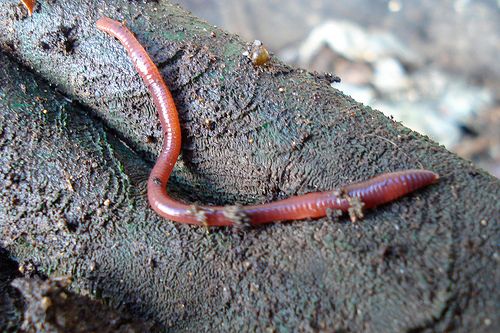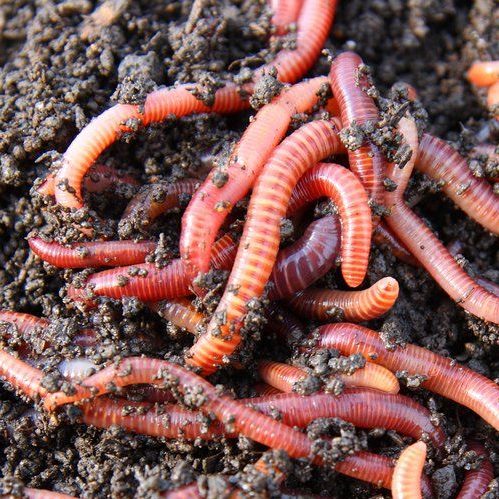The Secret to Lush Lawns Starts with Red Wiggler Express Lawn Care Services
The Secret to Lush Lawns Starts with Red Wiggler Express Lawn Care Services
Blog Article
Red Wigglers: The Unsung Heroes of Organic Waste Recycling
Red wigglers, or Eisenia fetida, function as essential representatives in the organic waste reusing process, changing thrown out materials right into useful vermicompost. Their efficient failure of raw material not only boosts dirt top quality yet likewise adds to sustainable waste management techniques. As the world increasingly looks for services to fight waste build-up and enhance agricultural performance, comprehending the function of these worms comes to be crucial. What systems permit them to flourish in garden compost settings, and exactly how can they be properly used in both residential and business settings? Checking out these inquiries discloses the more comprehensive ramifications of vermicomposting in our ecological landscape.
What Are Red Wigglers?
The amazing durability of red wigglers, medically called Eisenia fetida, underscores their important function in natural waste recycling. These tiny, reddish-brown earthworms are commonly discovered in decomposing natural issue, such as compost heap and manure loads. Lake Hickory Bait. Unlike other earthworm species, red wigglers flourish in nutrient-rich environments and are very efficient at breaking down natural products, making them necessary for vermicomposting

(Red Wiggler Express)Along with their duty in waste reduction, red wigglers add to dirt health and wellness by improving dirt framework and aeration via their burrowing activities (Lake Hickory Bait). Their existence in composting systems not just enhances decay rates but additionally advertises a lasting strategy to waste management, highlighting their relevance in ecological conservation initiatives
Advantages of Composting With Worms
Composting with worms, specifically red wigglers, uses numerous advantages that boost both waste administration and dirt health. These worms efficiently break down organic waste, converting it into nutrient-rich vermicompost that enriches soil. This process speeds up decomposition, permitting a much faster recycling of kitchen area scraps and various other organic materials compared to typical composting approaches.
Furthermore, the vermicompost created by red wigglers is bursting with advantageous bacteria, which help boost dirt framework, oygenation, and wetness retention. This enhances the overall wellness of plants, promoting strenuous growth and increased returns in yards and farming settings. In addition, using worms in composting reduces the manufacturing of greenhouse gases, such as methane, adding to a more lasting waste administration system.

Exactly How to Beginning Vermicomposting
Establishing a vermicomposting system is a simple process that can yield considerable advantages for both waste monitoring and soil enrichment. To begin, choose a suitable container, such as a get more plastic container or wooden box, with adequate air flow holes to ensure proper airflow. The dimensions need to ideally be around 2 feet by 3 feet, permitting adequate space for the worms to thrive.
Following, prepare bed linens product, which can contain shredded newspaper, cardboard, or coconut coir. This bed linen should be moistened to develop a suitable environment for the worms. Once the bed linens is in location, present red wigglers (Eisenia fetida) right into the bin, normally around one pound of worms for every square foot of surface.
Following the placement of worms, add organic waste, such as fruit and vegetable scraps, coffee grounds, and crushed eggshells. Prevent including dairy, meat, or oils, as these can develop odors and attract insects. Lastly, place the bin in a shaded, temperature-controlled area to keep optimal problems for worm task. With these actions, you will successfully start a vermicomposting system that contributes to lasting waste management and enriches your dirt.
Keeping a Healthy Worm Bin
(Red Wiggler Express)Maintaining a worm container flourishing needs normal attention and care to make sure the health and wellness of the red wigglers and the efficiency of the composting process. Proper maintenance begins with monitoring the wetness degrees; the bin must be damp however not soaked. An excellent regulation of thumb is to keep a consistency similar to a wrung-out sponge.
Aeration is crucial also. Carefully mixing the bedding and food scraps every few weeks stops compaction and guarantees that all worms have access to oxygen. In addition, it is important to feed the worms properly. A well balanced diet regimen of fruit and veggie scraps, coffee premises, and crushed eggshells need to be supplied in moderation to prevent overfeeding, which can bring about smells and pests.
Temperature level law is another crucial element. Red wigglers flourish in an array of 55 to 77 levels Fahrenheit. If the container ends up being as well warm or chilly, the worms might end up being worried - Lake Hickory Bait. Occasionally examine for indications of health and wellness, such as worm populace development and the visibility of healthy spreadings. By vigilantly managing these aspects, one can maintain a robust and productive worm container.
Effect on Sustainable Living
The effective maintenance of a worm bin not only benefits the wellness of red wigglers however likewise adds substantially to sustainable living methods. By reusing natural waste, such as kitchen area scraps and lawn particles, red wigglers aid draw away considerable quantities of product from land fills. This reduction in waste not just reduces greenhouse gas emissions yet likewise minimizes the environmental worry related to waste management.
Additionally, the castings produced by red wigglers work as a nutrient-rich natural plant food, boosting dirt health and wellness and promoting plant growth. This all-natural choice to chemical fertilizers supports lasting agriculture and gardening methods, reducing reliance on synthetic inputs that can harm communities. Furthermore, worm composting cultivates understanding of waste monitoring, encouraging people and areas to adopt even more lasting practices.

Verdict
In recap, red wigglers offer as important factors to organic waste recycling through their reliable decomposition of natural products. By incorporating vermicomposting right into waste administration techniques, individuals and communities can significantly decrease waste while promoting ecological sustainability.
Report this page